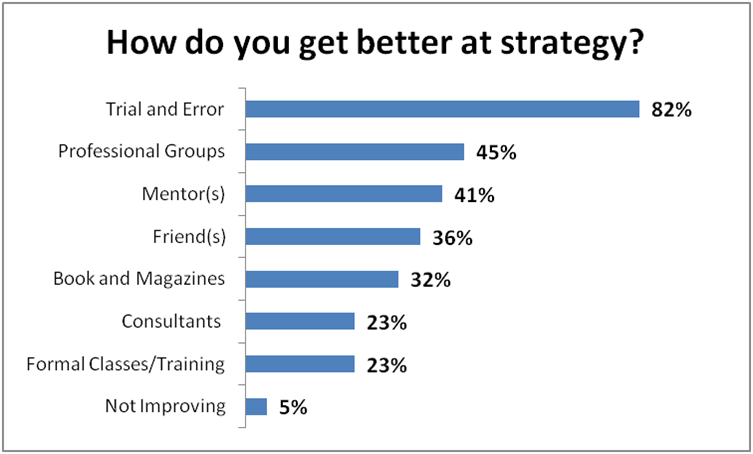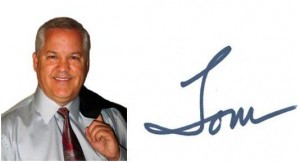Selling strategy and strategic thinking to a trial-and-error management team can make perfect sense. In fact, it not only makes perfect sense but it is a complementary antidote to inevitable blind spots of the most intuitive of people. Properly executed, a thorough strategy process balances perspectives to reduce the possibility of missing something important. Indeed, systematically eliminating unknowns (or, better, converting assumptions to facts) is an important cornerstone to discovery driven growth.
Eskimos, as the saying implies, are not the best customers for snow makers. Obviously, given where they live, snow and ice exist in abundance. Producing something that is already free seems unlikely to induce someone to make an incremental investment. Yet, an Eskimo depends on the ice and snow for traditional igloos and, perhaps more importantly, for maintaining an environment that supports their lifestyle. It is a hedge, maybe, to pay for something that often appears unneeded. However, the moment the temperatures rise, that hedge is all that stands between disaster and survival.
Strategy is similar. Most management teams get by on undirected intuition. They already “own” this and everyone has an opinion to assert. Sometimes, it works spectacularly well. After all, business owners and senior managers tend to be smart, experienced people. Other times, increased competition or environmental changes expose a lack of strategic problem solving. When that happens, business results suffer.
Recently, with Don Springer of the The Colton Group, I completed a survey of 22 business leaders of small-to-medium size businesses. Most of these businesses involve technology products and services. The demographics from the survey are shown in the following graphics.
Overwhelmingly, the respondents were CEO and/or owners. All of the other respondents held senior positions within their companies. How do these senior leaders get better at strategy? Looking at the results below, most simply employ trial-and-error approaches. The upside to this approach is that it represents an on-going learning mentality. This is good. The possible downside is that it reflects unstructured strategic thinking that impairs or inhibits growth. Also, note the importance of trusted relationships. Professional groups, mentors and friends were all sources for improvement.
They expected that their top five strategy activities in 2011 would be the following (I have added commentary for each activity).
1. Deciding the right strategy for the business. There are so many choices of where and how to apply resources. For small companies, a wrong choice may put the company out of business. Thus, it is unsurprising that this decision is most important. Interestingly, large companies have a different problem. They often “know” the right strategy and implement cultural and process barriers to dismiss objections or people that challenge untested assumptions.
2. Aligning the management team to support the strategy. Even the best strategies are impotent before implementation. A visionary, superbly intuitive genius needs other people. Hence, aligning the larger management team and then the rest of the employees around the decided strategy is absolutely critical. This is more critical during changes because changed strategies may affect culture, processes and people. These three dimensions are powerful when pointing in the same direction and destructive when they are not.
3. Balancing strategy and tactics effectively. Overwhelming, leaders and employees have a tactical mindset that drives them to near term accomplishments and results. The caution against “being penny wise but pound foolish” emanates from this predilection. Owners and senior management cannot afford this imbalance. They are responsible for both long and short-term thinking. Since most of the organization specializes in the tactics, it appropriately falls to the leaders to think strategically.
4. Deploying strategy within the company. As mentioned before, deploying a strategy internally is consequential. It may shift responsibilities and budgets, alter the organization structure, introduce new market or customer targets and set different incentives and goals. Poor deployment leads to chaos. Conversely, effective deployment leads to new energy that can stimulate growth.
5. Improving operational efficiency. Ah, the key internal success factor is costs. That is, the costs to run the business to produce the products or services. Aside from revenue and profit numbers, most senior managers measure costs for two good reasons. One, it is measureable (and other factors such as employee buy-in are not). Second, there is a stronger sense of direct control over costs versus externally driven metrics.
You can see the complete set of survey results and download the survey from the JTHawes Consulting website.





[…] This post was mentioned on Twitter by Tom Hawes and Tom Hawes, Andrew Beurschgens. Andrew Beurschgens said: RT @JTHawes: The Hard Sell – Strategy to an Experimenter: It should not be. Selling strategy and strategic thinking… http://bit.ly/cmFoSS […]